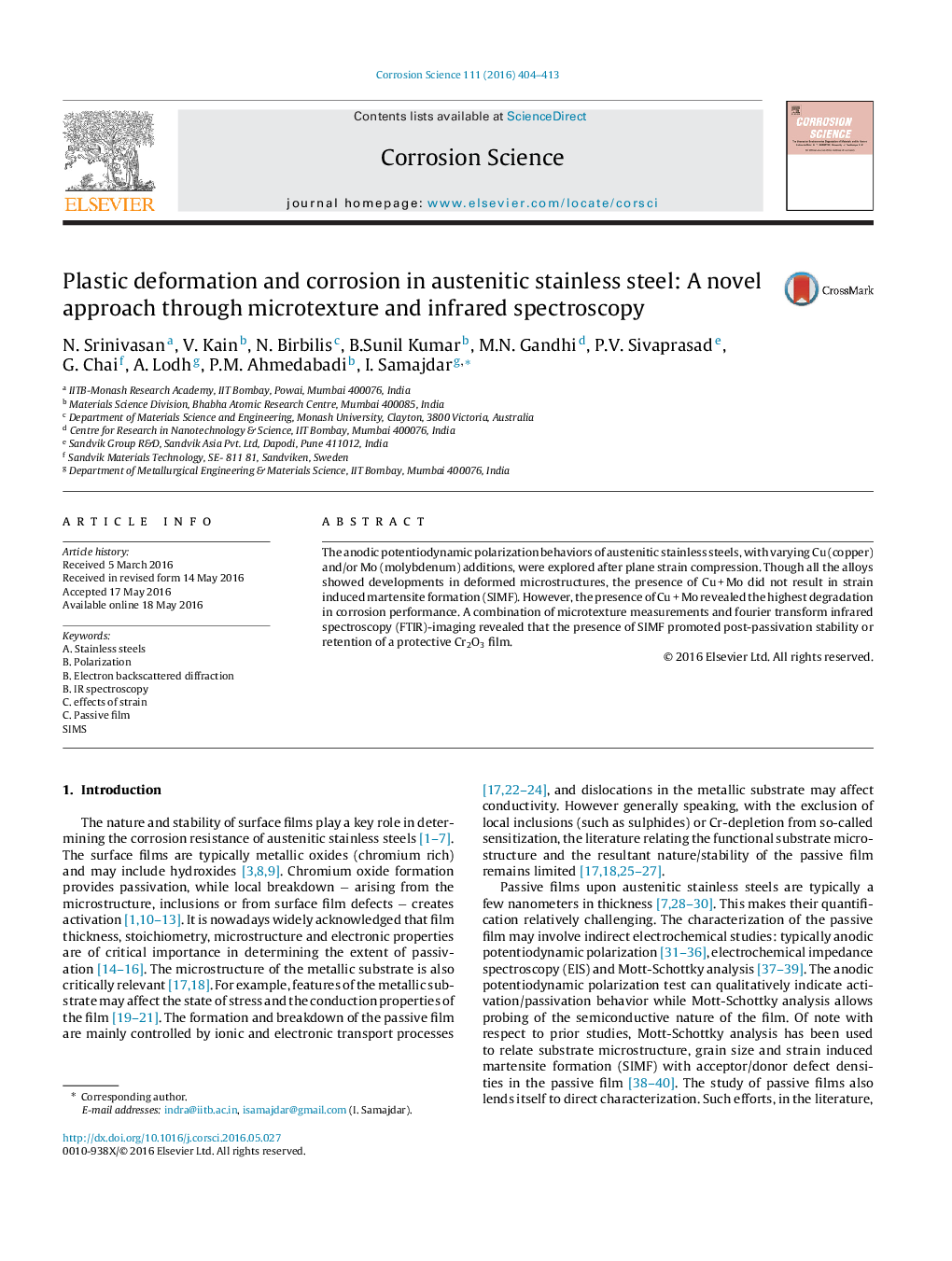| Article ID | Journal | Published Year | Pages | File Type |
|---|---|---|---|---|
| 1468310 | Corrosion Science | 2016 | 10 Pages |
•Deformed led to deterioration of bulk corrosion performance.•Maximum deterioration in the grade without strain induced martensite formation.•EBSD and FTIR-imaging enabled direct observation of location dependent Cr2O3 film.•Strain localization plus martensite sites showed higher intensity of Cr2O3.
The anodic potentiodynamic polarization behaviors of austenitic stainless steels, with varying Cu (copper) and/or Mo (molybdenum) additions, were explored after plane strain compression. Though all the alloys showed developments in deformed microstructures, the presence of Cu + Mo did not result in strain induced martensite formation (SIMF). However, the presence of Cu + Mo revealed the highest degradation in corrosion performance. A combination of microtexture measurements and fourier transform infrared spectroscopy (FTIR)-imaging revealed that the presence of SIMF promoted post-passivation stability or retention of a protective Cr2O3 film.
